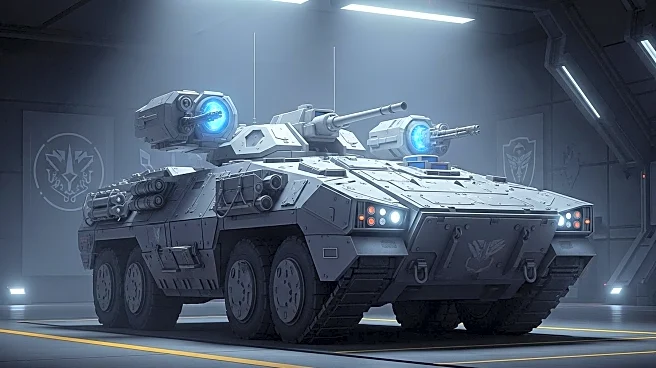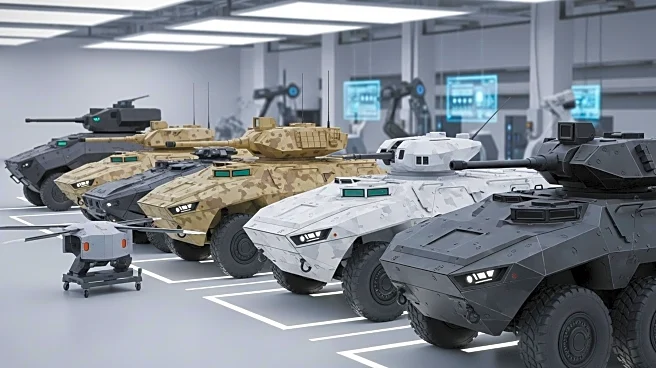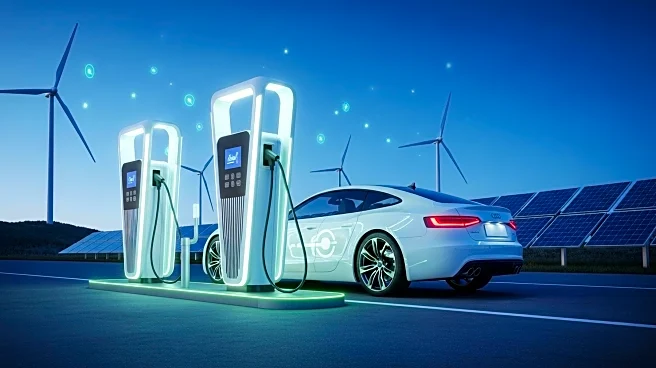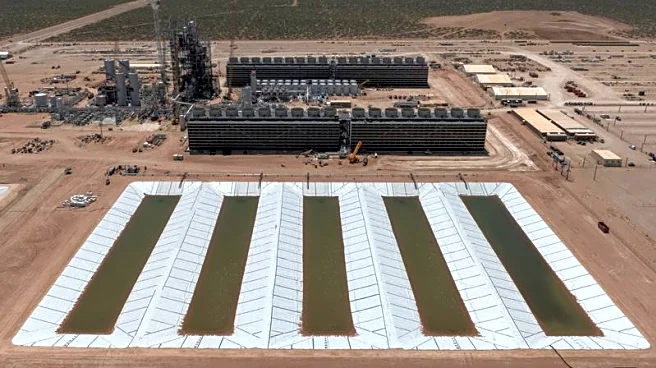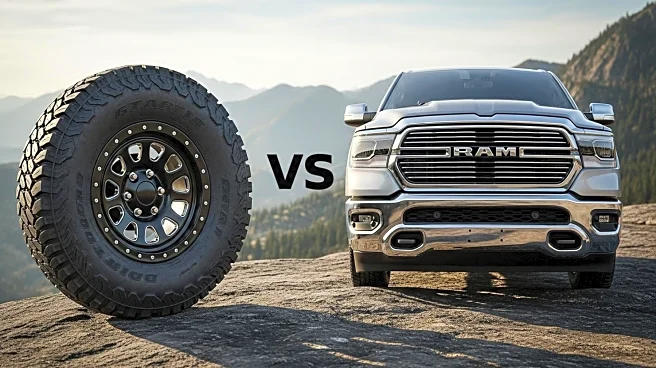What is the story about?
What's Happening?
GM Defense has introduced new variants of its Infantry Squad Vehicle (ISV) at the General Motors Milford Proving Ground in Michigan. The ISV and ISV-Utility (ISV-U) are based on the Chevrolet Colorado midsize pickup and are powered by a Duramax turbodiesel engine. These vehicles are designed for light infantry and mobile brigade combat teams, as stated by Stephen duMont, president of GM Defense. Additionally, the ISV-Heavy (ISV-H) variant, based on the Chevrolet Silverado pickup, is a heavy-duty hybrid truck equipped with a 100 kW h battery for silent operations. The ISV-H has a gross vehicle weight of approximately 14,000 pounds, including a payload capacity of about 4,000 pounds.
Why It's Important?
The introduction of these new ISV variants is significant for military operations, as they offer enhanced mobility and energy efficiency on the battlefield. The hybrid technology in the ISV-Heavy allows for silent operations, which can be crucial for stealth missions. The reduced training time required for troops to operate these vehicles, due to their similarity to civilian models, can lead to quicker deployment and operational readiness. This development reflects a growing trend in military technology towards more versatile and energy-efficient vehicles, potentially impacting future procurement and operational strategies within the U.S. military.
What's Next?
The deployment of these new ISV variants could lead to further evaluations and potential adoption by various military units. As these vehicles are integrated into operations, feedback from troops and commanders will likely influence future modifications and improvements. GM Defense may continue to innovate and expand its offerings to meet evolving military needs, potentially leading to new contracts and collaborations with the Department of Defense.
Beyond the Headlines
The shift towards hybrid and energy-efficient military vehicles highlights broader trends in defense technology, focusing on sustainability and operational efficiency. This move may also prompt discussions on the environmental impact of military operations and the role of technology in reducing carbon footprints. Additionally, the ease of training and operation could influence recruitment and training strategies, making military service more accessible to a wider range of individuals.
AI Generated Content
Do you find this article useful?
